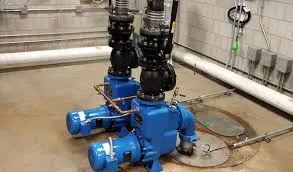Khmer
- Afrikaans
- Albanian
- Amharic
- Arabic
- Armenian
- Azerbaijani
- Basque
- Belarusian
- Bengali
- Bosnian
- Bulgarian
- Catalan
- Cebuano
- Corsican
- Croatian
- Czech
- Danish
- Dutch
- English
- Esperanto
- Estonian
- Finnish
- French
- Frisian
- Galician
- Georgian
- German
- Greek
- Gujarati
- Haitian Creole
- hausa
- hawaiian
- Hebrew
- Hindi
- Miao
- Hungarian
- Icelandic
- igbo
- Indonesian
- irish
- Italian
- Japanese
- Javanese
- Kannada
- kazakh
- Khmer
- Rwandese
- Korean
- Kurdish
- Kyrgyz
- Lao
- Latin
- Latvian
- Lithuanian
- Luxembourgish
- Macedonian
- Malgashi
- Malay
- Malayalam
- Maltese
- Maori
- Marathi
- Mongolian
- Myanmar
- Nepali
- Norwegian
- Norwegian
- Occitan
- Pashto
- Persian
- Polish
- Portuguese
- Punjabi
- Romanian
- Russian
- Samoan
- Scottish Gaelic
- Serbian
- Sesotho
- Shona
- Sindhi
- Sinhala
- Slovak
- Slovenian
- Somali
- Spanish
- Sundanese
- Swahili
- Swedish
- Tagalog
- Tajik
- Tamil
- Tatar
- Telugu
- Thai
- Turkish
- Turkmen
- Ukrainian
- Urdu
- Uighur
- Uzbek
- Vietnamese
- Welsh
- Bantu
- Yiddish
- Yoruba
- Zulu
Telephone: +86 13120555503
Email: frank@cypump.com
វិច្ឆិកា . 02, 2024 22:40 Back to list
toilet sewage pump
Understanding Toilet Sewage Pumps A Key Component in Waste Management
Toilet sewage pumps play a crucial role in residential and commercial waste management systems. These pumps are specifically designed to transport wastewater from toilets and other plumbing fixtures to the main sewer line or a septic tank. Understanding their functionality, types, and maintenance can help homeowners and facility managers ensure efficient drainage and sanitation.
At its core, a toilet sewage pump is a submersible device that is installed in the basement or another lower area of a building where gravity drainage is not possible. Instead of relying solely on gravity, sewage pumps use a motor-driven mechanism to move waste efficiently. This is particularly important in properties where the main sewer line is at a higher elevation than the plumbing fixtures, making traditional drainage impossible.
There are two main types of sewage pumps grinder pumps and ejector pumps. Grinder pumps are equipped with sharp blades that shred solid waste, such as toilet paper and small objects, turning them into a slurry. This allows the waste to be pumped easily through narrow pipes, which is particularly beneficial for homes with long plumbing runs or where local regulations require smaller pipe diameters.
On the other hand, ejector pumps function on a slightly different principle. They do not grind waste; instead, they rely on a large impeller to push the wastewater upwards through the plumbing system. While they handle liquid waste well, ejector pumps may struggle with large solid items, which could lead to clogs if not managed properly.
toilet sewage pump

When considering the installation of a sewage pump, it is essential to choose the right model based on the specific needs of the property. Factors such as the amount of wastewater generated, the distance to the sewer line, and local plumbing codes should all be taken into account. Moreover, the pump's horsepower and the size of its discharge line are critical for ensuring effective and efficient operation.
Maintenance plays a vital role in the longevity and reliability of sewage pumps. Regular check-ups should include inspecting electrical connections, cleaning the pump to prevent debris buildup, and ensuring the float switch is functioning correctly. Moreover, homeowners should be vigilant about what goes down the toilet to avoid clogs; items like wipes, feminine hygiene products, and other non-flushable materials can wreak havoc on plumbing systems.
In many cases, installating a sewage pump is not just a matter of convenience but a necessity, particularly in areas prone to flooding or where plumbing configurations do not permit gravity drainage. For property owners, investing in a high-quality sewage pump can prevent costly repairs and health hazards associated with sewage overflows.
In conclusion, toilet sewage pumps serve as an essential component in modern waste management systems, providing a solution for effective wastewater transport. Understanding the types, functions, and maintenance requirements of these pumps can empower homeowners and facility managers to make informed decisions, ensuring a reliable and hygienic plumbing system. With the right knowledge and care, anyone can make their waste management system more efficient and problem-free.
-
Reliable Non-Clog Sewage Pumps with GPT-4-Turbo Tech
NewsAug.04,2025
-
High-Performance Air Pumps for Sand & Gravel | Efficient Transport
NewsAug.03,2025
-
ISG Series Vertical Pipeline Pump - Chi Yuan Pumps Co., LTD.|Energy Efficiency, Corrosion Resistance
NewsAug.03,2025
-
ISG Series Pipeline Pump - Chi Yuan Pumps | Energy Efficiency&Compact Design
NewsAug.03,2025
-
ISG Series Vertical Pipeline Pump - Chi Yuan Pumps Co., LTD.|High Efficiency, Low Noise, Durable
NewsAug.02,2025
-
ISG Series Vertical Pipeline Pump - Chi Yuan Pumps | High Efficiency, Low Noise
NewsAug.02,2025










